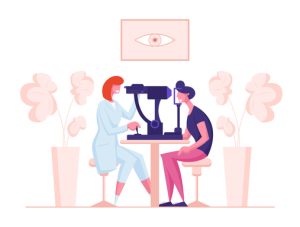This is our ultimate undergrad guide for Biomed with stats! (Health Sci coming soon). Biomed allows you to apply to all the clinical programmes and is the route most students take. The year is quite full-on, and it’s vital that you adjust quickly because semester one accounts for 3/4 of the med core papers. Based on grade distributions, you should aim to be within the top 10% of your cohort to secure an A+.
This post is quite long and is my own experience of the courses. I didn’t include everything since it would be too long, so I wrote things I found important + tips. Since the courses are constantly changing, our info may be outdated. I did my first year during the lockdown (2020), so it may not apply to the current year, but hopefully, this guide will be helpful😊.
Check out the course outlines to see a more detailed overview of the courses. If you want to know how to prepare for the MMI, click here!
Semester one:
Stats: Although the grade distributions for the courses are in 2021, the percentage of students obtaining A and A+ does not differ significantly from pre-covid years (2019). We did not include grades lower than C- in our grade distribution graphs.
BIOSCI 107
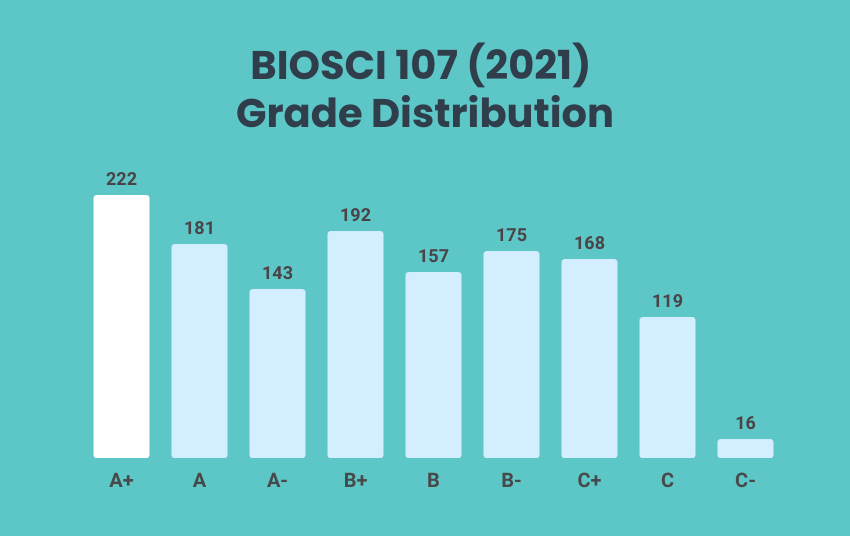
Lectures:
The lectures in this course can be quite content-heavy, which can be a shock coming from high school. I remember the first few lectures had 50 odd slides, and the amount of content really shocked me. Biomed is very different from high school, so I suggest you prepare (mentally) for this year. I annotated the lectures and wrote notes on my iPad using the Apple pencil. This is not the most optimal study method, but luckily I had open book exams and a grade boost!
There are quizzes at the end of each topic to test your knowledge. You have 3 attempts, and you can use it to check your knowledge and its good revision. These quizzes are not too challenging, and you should aim to get full marks since it counts towards your final grade.
There are other resources to help you with your learning. There are questions on Orion that you can answer to test your knowledge. It’s okay to get things wrong since it doesn’t count towards your final grade; you just need to attempt it. I didn’t use Orion much since some of the questions were a bit hard and not THAT relevant to the course. Another resource is Peerwise, where you and your classmates make MCQs for each other to practice. You receive marks if you write at least one question. Peers is a pretty good resource for revision. There will be a LOT of questions to answer!
You will have five labs, and in each lab, you will complete an assignment sheet that will be marked. Remember to do the pre-lab quiz on Canvas before your lab! We had the first lab in person, which was rat histology. I did pretty average in this lab since I didn’t adequately prepare beforehand. I suggest you study the lab guide before your lab, as these labs are not the same as in high school. Make sure to ask your lab tutors and peers for help when you need it. They will be happy to help! The rest of the labs were online, where we completed tasks online, mostly filling in the blank activities. I found this much easier than in-person labs.
The in-course test was online for us, and it consisted of 80 questions from lectures of the first half of the semester. Usually, the textbook readings will also be examined. Because of the lockdown, the textbook content was not examined. For this reason, I highly recommend that you get the textbook, do the required readings, and make notes/flashcards accordingly (although I didn’t do this). Find an efficient study method that works for you. For me, it’s active recall using flashcards and drawing out diagrams.
The final exam was again online, open-book and 24 hours. 80 MCQs from the final topics of the course are tested in this exam. Despite this, I didn’t do well because I got lazy revising since it was an open book exam. Some of the questions were quite tricky, and I was not sure about a lot of questions. You should revise well for this exam, take advantage of the practice quizzes available on Canvas, and focus on your weak points. You can find past papers on Canvas, and thankfully it has answers. I recommend you download/print the questions out and do them for revision. I remember going through them many times to test my knowledge of concepts during the CST. You can also study with others and use Piazza when you have questions. There are a lot of good questions on Piazza, so make sure to be active on it.
CHEM 110
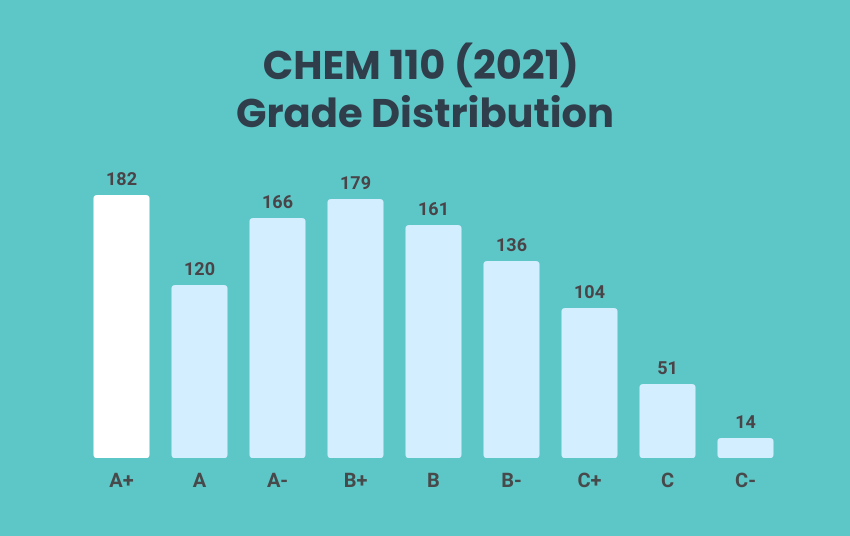
Lectures:
I found this course quite hard. It starts off easy, basically recapping NCEA Lv3, then new concepts are introduced. It really helps if you have a chemistry background from high school. There are different blocks, and each block has a coursebook with information and questions. I didn’t use this until the end of the semester (which I should have). For the lectures, I annotated the slides and initially wrote notes. I found the note writing to be too time-consuming, so I used the lecture slides as notes instead since exams were open book and online.
There is a quiz at the end of the week (11 in total), and the best 8 counts towards 5% of your overall grade. A few questions can be tricky, and I felt quite a bit of pressure while doing them. I would mentally prepare beforehand and triple-check my answers to avoid silly errors. MOST of these quizzes are pretty straightforward, so try not to stress too much on these.
There is an assignment called Science in the Media, which consists of quizzes, a research essay and a peer mark activity. You will analyse and write about how science is reported in the media and its consequences on society. The quizzes in this assignment have multiple attempts, so get those free marks! My advice for the research essay is to double-check your referencing (for errors) and look at the marking criteria when writing your essay. Don’t be too harsh on your peers for the peer marking activity! I remember being too harsh since I heard from people that it’s really hard to get good grades in this module (it’s not). You will be penalised if the mark you give is too far off from the official mark.
In this course, there is this thing called plussage, which allows you to allocate weightings of the test and exam. “If the exam score is higher. So for example, a student who qualifies for full plussage, and has a better exam score than test score will have their exam worth 65% of their final score, and their test worth 15%. If their test score is better than their exam score, the exam will be weighted at 50% and the test at 15%.” You can get full plussage by a variety of ways, “complete 400 points on best choice OR complete 2 chapters on Orion, answering at least 30 questions, with a proficiency score of at least 60% OR actively participate in 3 zoom tutorials or tuākana sessions.” I got my Plussage from BestChoice. I do some questions after each lecture, so I don’t have to last-minute grind through it. BestChoice can sometimes be confusing to use, but it’s mostly pretty straightforward. I definitely suggest you get full Plussage to your advantage.
There are five labs, and we only had the first lab in person. I found this lab quite difficult due to the time pressure. I didn’t properly revise for this lab as I didn’t expect it to be that hard coming from high school. You have a time management plan in the lab guide to keep you on time. I suggest that you study the lab instructions beforehand and watch all the lab resource videos. Make sure you know the method of the experiment well, so you won’t be reading through it like I was during the experiment. You will hand in an assignment sheet which will be marked and graded. Remember to do your pre-lab before the lab session, you have 10 attempts, and the best score is kept, so get those free marks😉. The rest of the labs were online, and we submitted graphs and assignment sheets online. I found this much easier than the in-person labs.
We had the mid-term test online 24-hours, and it was HARD. I remember being stuck for hours on some questions trying to figure out a solution. The test is supposedly designed to be 1hr 15mins, but I’m sure almost everyone took WAY longer than that. The reaction scheme is probably the hardest question. We had to upload a reaction scheme based on a compound. I drew the reaction scheme out on Notability (iPad ftw). I took way too long trying to make it look neat. The other parts of the test are relatively straightforward, including MCQs and fill in the blanks. For this test, I recommend you to know the reaction schemes by heart, including the reactants and products. This will help you in the exam since it is very likely to come up.
The final exam is usually a 2-hour exam with a mixture of MCQ and SAQ, but we had it 24 hours online. There were 33 questions, each with many parts, making it hard to get a good score. Again, we had to design and upload a reaction scheme which I found to be the most challenging part of the exam. There are more calculation type questions in this exam, and again, high school chem knowledge is very beneficial. Since this exam was open book 24-hours, I got lazy and didn’t properly revise or do past papers (re-occurring theme🥺). There are many revision resources such as past papers (WITH ANSWERS!!!) available on Canvas and questions on Best Choice and Orion. This should be more than enough to help you with revision. After you’ve revised, I suggest you do some past paper questions in a closed book setting to see which areas you need more work on. The time pressure can be intense in this exam, so get a timer if you think you will run out of time.
POPLHLTH 111
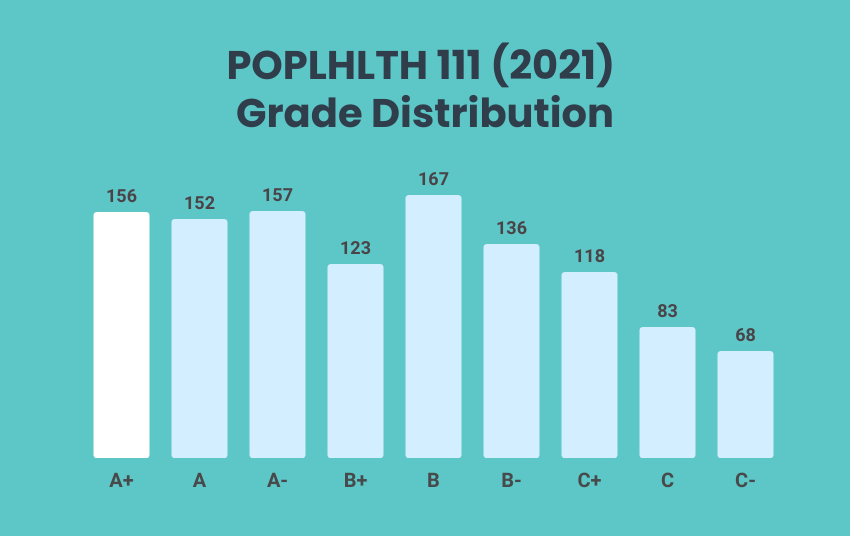
Lectures:
The lectures in this course are not as content-intensive as the other courses. However, some new concepts are introduced that you might not have encountered in high school. You will learn about various concepts about population health, such as equity and how Epidemiologists record and analyse data. Some lectures can be somewhat boring, but you should try your best to stay on top of the content. For the lectures, I annotated the slides and downloaded the readings, highlighting the important stuff. Sometimes the lecturer puts a star on the slides to show that it is important. Since there are many diagrams in this course, I often drew on my iPad for revision. I should have revised better for this course, but surprise! I didn’t. However, I did go through the lectures and readings near the end of the semester since I panicked. I made some quick notes to prepare me for the final exam.
There are six quizzes throughout the semester consisting of five MCQs with three attempts. You should aim to get 5/5 for some free marks!
There are no labs in this course, but there is a PBL workshop where you will work with a group to complete an assignment. You will be assigned a disease with your group, and you will work on a presentation that you will present to your lab stream. There are 5 workshops in total, and in between each workshop, you complete a small assignment (worksheet) as a group and hand it in before the workshop. The final workshop is a presentation of your assignment where you will be assigned a group and individual mark. We had this online, and instead of a presentation, we wrote our scripts on Google Slides. Your group should meet at least once every 2 weeks to discuss your project and complete the assignment. My group divided the tasks between the members and researched different parts of the assignment. We regularly called to work on our projects on a shared Google Slide. I suggest you work together and set targets so that you won’t have to cram the assignment last minute.
The mid-semester test consists of 40 MCQs, and we had it online. Honestly, this test was a bit of a fluke since I didn’t feel I did enough prep for it. Lectures 2-16, readings and content up till workshop two was tested. Although the test is open book and 24 hours, I still felt a lot of pressure. I handed my test in after two hours since I thought it looked bad if I had used 24 hours (it wouldn’t have made a difference). I would search through the lecture slides and readings for the relevant concepts for open book exams. I found that open book did not make much difference since many of the questions required you to work out the answer. Online tests often require you to have a deeper understanding of concepts rather than surface knowledge points. For this course, you must understand the underlying concepts. There is an online practice test that you can do that is available on Canvas. I suggest you do it closed book to find your weaknesses.
The final exam was also online, and it consisted of MCQs, SAQs and uploading a file of your GATE frame. This test mainly tests your ability to analyse studies and answer questions accordingly. Open book exams did not help much since we had to work a lot of things out. I studied for this exam by going through the different study types and focusing on the slides where the lecturer put a star. You must know how to draw the GATE frame because it will definitely be tested. If you have time, double-check your answers for the calculations since silly mistakes can make you lose marks.
Gen Ed
Most people do their Gen Ed in semester one. Check out our ULTIMATE Gen Ed guide!
UCAT
If you plan on doing the UCAT for med, I suggest you prepare early.
I’ve heard plenty of things like you can’t study for the UCAT, or one can be just naturally good. Although some people are inherently good, I certainly think prep can give you a big advantage. You can find practice questions online (free) or pay for some pretty good tutoring. Some of my friends did “barely any prep” and got pretty good scores, while I did lots of prep and did pretty average. I certainly think that it is different for everyone, but I strongly suggest you do some practice before your UCAT to get a feel of what it is like.
Since many students obtain good grades, UCAT and the interview can be the deciding factor in the entry to clinical programmes.
Semester Two:
BIOSCI 101
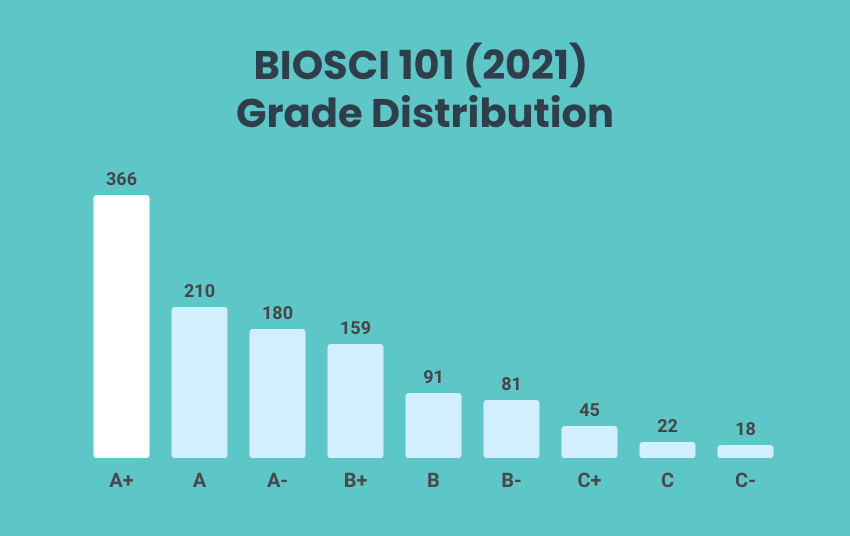
Lectures:
The lectures in this course start off with bioenergetics which I consider the hardest part. I remember sitting through the being lecture completely lost and giving up taking notes. The lecturer (bioenergetics) releases prep videos and resources before each lecture. I watched some of it, and while it is helpful, it’s not essential. The slides for bioenergetics are quite messy, but you should be okay with some good revision. I drew out the steps and diagram for ATP synthesis while going through the recordings. The rest of the sections are easier (cells and molecular biology and genetics), and I annotated slides and the course guide for study. A lot of the content builds on the foundation of NCEA biology from high school, so if you took those subjects, it shouldn’t be too hard.
There is an online MasteringBiology assignment in which you drag and drop answers. There are multiple attempts, and I honestly found it quite fun to do since it was so easy. Since I like to finish assignments early, I would do the tasks after each lecture. This accounts for 12% of your overall grade, so make sure you get these free marks!
There are six labs in total. The first is an introduction to labs, and you hand in a worksheet at the end of each lab. We only had the first lab in person, and the rest of the labs were online. The third lab is for learning strategies and it is optional to attend. The labs we had consisted of online worksheets and Canvas MCQs. It’s pretty straightforward and shouldn’t be too hard. Remember to do the pre-lab quiz before the lab, read the lab guide and prepare well if you are doing it in person.
The in-course test consists of 50 MCQs from bioenergetics, cell and biomolecular sections. I found this test to be pretty easy since I did good revision. We had the test online, and we had 90 minutes to finish. There are a LOT of past questions to practice on canvas. I went through them many times to consolidate my knowledge. I would do them closed book to find my weak points and revise accordingly.
The final exam was in person, and we were allowed to bring in an A4 cheat sheet to help us with the exam. The exam contained content from all lectures (no labs) and consisted of 70 MCQs. I made my cheat sheet in Word and focused on the lecture objectives. Although I didn’t revise until near the exam date, making the cheat sheet proved to be good revision. This is because I went through all the important parts of the lectures (slides and recordings) in detail. I had to really think about the concepts since I didn’t want to miss anything. There were a lot of past questions on Canvas, and I did it closed book (many times) to find gaps in my knowledge.
BIOSCI 106
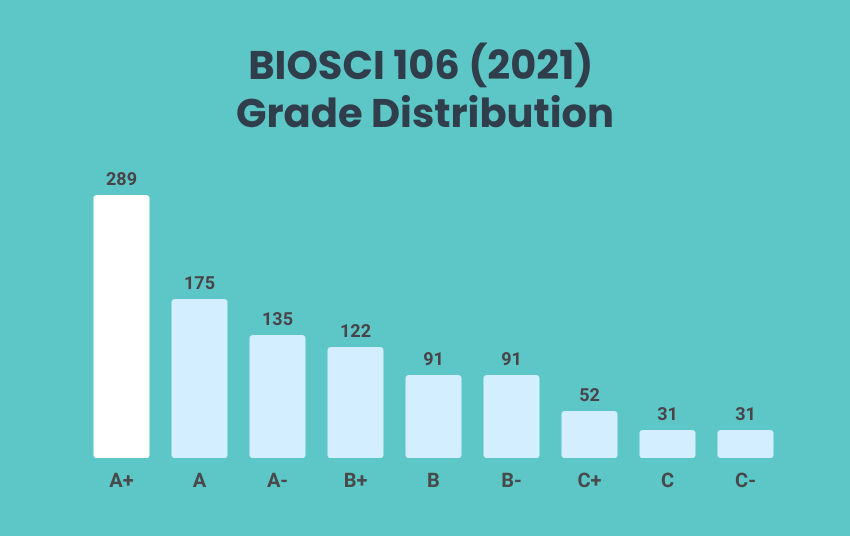
Lectures:
The lectures in this course are somewhat similar to BIOSCI 101. The beginning of the course starts with catalysing life, which kind of builds on CHEM 110. The enzyme mechanics section is quite hard, and there are a TINY BIT of maths involved. The lipids sections were quite boring, so I found it challenging to concentrate in lectures. However, after going through the lectures for revision, many concepts finally made sense. Focus on the learning objectives and main concepts during revision. There is a post-lecture quiz at the end of each lecture, so make sure you remember to do it! These quizzes are pretty easy, and they also act as good revision. I didn’t take notes for this course and only annotated my course guide.
There are five labs in total, and you hand in a worksheet at the end of each lab, which counts towards your lab grades. Remember to do the pre-lab quizzes before the lab. I would suggest that you read the lab guide beforehand and make any preparations that you need. We only had the first lab in person, and the rest of the labs were online. For online labs, we read through the lab guide and watched relevant videos. We then answered questions on canvas. These labs are pretty straightforward, so you should be okay as long as you prepare.
The semester test is in the middle of the semester, and there were 66 questions from the lectures (no labs), and it was an online test. I must say that I found this test pretty challenging, partly because I didn’t properly revise for it. The hardest part of this test (in my opinion) is enzyme mechanics and ATP production. You can do the mock test first on canvas (closed book), find your weak points and focus on revising those weak points. The contents of this test will not be tested in the final exam!😊
The final exam tests the content from the rest of the lectures, and we had this test in person. We were allowed to bring in a sheet of 4A cheat sheet to help us with the test. I made the cheat sheet in Word using a small font. I went through all the relevant lectures and made the cheat sheet based on learning objectives. I wrote down all the important concepts and niche details I may forget. I also did past papers as practice on canvas (many times) to find weak points to put on my cheat sheet. There were 90 MCQs for the final exam, and my study methods were pretty effective since I barely used my cheat sheet in the exam at all.
MEDSCI 142
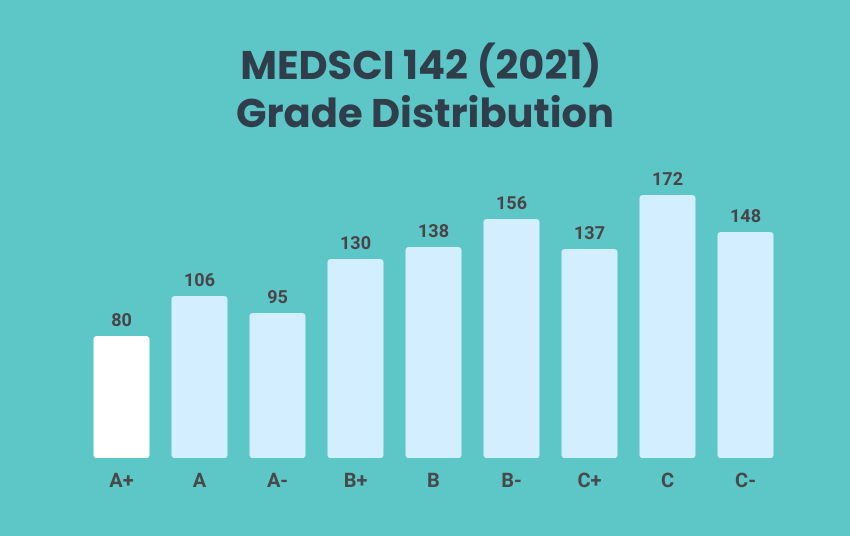
Lectures:
MEDICI 142 is undoubtedly the most content-heavy course in semester two. You will learn human anatomy and the physiology of the body systems. Lectures can be overwhelming with content, so I rewatch them at home and make appropriate flashcards for revision. You should do the Kuracloud assignments after your lectures and find gaps in your understanding. Don’t be afraid to use Piazza when you need help. There are great discussions there! If you want the best practice for Medsci, check out our custom made question bank with over 600 questions!
Labs and quizzes can be challenging. There are in total seven labs and you will have a lab quiz after each lab, testing the content in each lab. Labs include rat dissection, nervous system, respiratory system etc. I suggest you revise the day before and really know the content. Pay attention during labs and make plenty of notes in the lab (in the lab guide) since in-person labs are not recorded. The lab content is also tested in the semester tests, so it’s good to make notes after your labs so you can always come back to it later. I made flashcards on Quizlet after each lab and revised them before tests. Online labs (and quizzes) made my life slightly easier since it was recorded, and I could take my time to make notes and rewind if needed.
Test one and two are both MCQs consisting of 52 questions. Test one consists of MCQs from the first 17 lectures and 6 MCQs from the first 3 labs. Although we did this test online, it did not make it any easier, and the class average mark was pretty low. I strongly recommend you to do the mock test one closed book and after you’ve revised to see the gaps in your understanding. I found this extremely helpful as I focused on the areas I did badly and managed to get a pretty decent mark.
Test two was in person, and the rest of the lectures and labs were assessed. I found the lecture content easier but lab content especially hard and lost most of my marks there. There is no mock test for test two, so you will have to find your own areas of weakness. I mainly revised using my flashcards and the lab guide for these two tests as well as going through the questions (again) on Kuracloud.
The exam is three hours, testing all of the lecture content (no labs) with a mixture of short answer questions and fill in the blanks. There is a wide variety of types of questions, and you should attempt every question. For this test, I drew diagrams and processes on pieces of refill paper and labelled them. Diagrams are crucial for the final exam as they can support your answers. Many questions will ask you to draw and label diagrams. My drawings were quite rough when I revised, but I drew them out regularly leading up to the exam to cement my memory. I also went through my flashcards, especially on topics I was less confident about. I downloaded past papers did relevant questions, and hoped to find patterns in the exam questions. I marked the questions with my friends, and I recommend that you do this as well.
PHYSICS 160
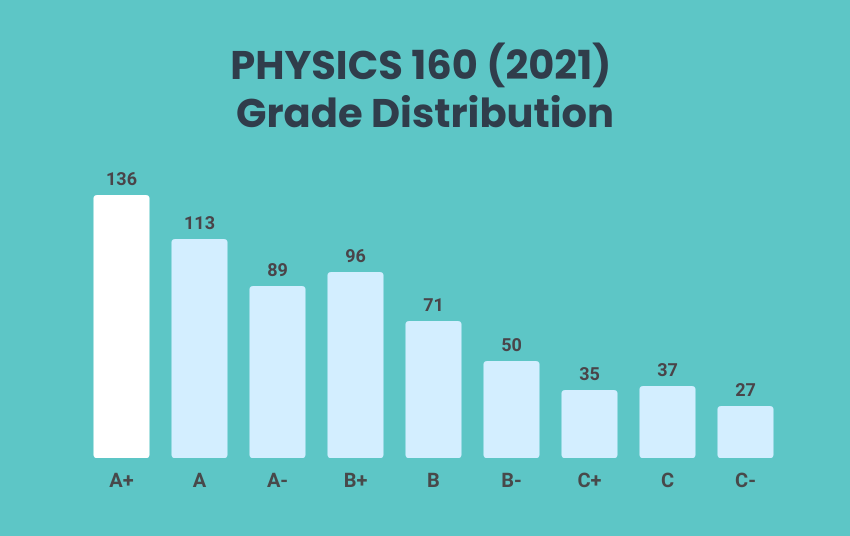
Lectures:
The beginning of this course is like an extension from NCEA Lv 3, starting with mechanics and electricity. The content progressively gets harder and I would say thermodynamics is the hardest. The content near the end of the semester is medically related. For the lectures, I made notes on the course guide and answered the questions in the booklet. There are four WileyPlus assignments in this course, and I found it quite fun. The assignment questions consist of concepts lectures. The assignments are released one after the other. You get 5 attempts for each question and I did questions after each lecture so I could finish it early. Some questions can be hard, but you can always come back to it or ask for help on Piazza.
There are six labs, and we had five of them online. In the first lab, we sat on allocated tables. We formed groups on our tables to do an experiment and write a group lab report to hand in. We allocated tasks for each member, such as recording data, writing reports and using the timer. For in-person labs, remember to do the pre-lab assignment before each lab. The rest of the labs were online and individual, which I preferred. We did experiments online and wrote reports. I would always try and finish it early, so I didn’t have to think about it. These labs are pretty easy, and lab content is not included in tests and exams.
Test one contained 20 questions from mechanics and electricity. Some of the questions in this test were pretty hard. Although the test was online, I felt the time pressure (60 mins) since I would always recheck my answer. My suggestion is to not be too hung up on one question and move on if you get stuck. You can always come back to it later. You can do relevant past paper questions and do practise tests to test your knowledge. There are plenty of questions, and you can even redo your WileyPlus assignments for practice.
Test two contains 20 questions from optics and waves and thermodynamics. I found this test pretty hard, even though it was an online MCQ. The 60 minutes goes by very quickly, so make sure you don’t spend all your time on one question. Again, you can do past papers and practise tests as practice. Thermodynamics is the most challenging concept, so you might need to spend extra time revising it.
The final exam was originally in person and we were allowed to bring in a cheat sheet (2 pieces of A4 pieces of handwritten paper). I wrote down all the important formulas, which took me a very long time to fit everything. However, because of covid, it was moved to online. The test is split into two parts, A and B. Part A is MCQs which had a lot of overlapping concepts from the two-semester tests. This part is relatively straightforward. Part B is short answer questions, but we had to show working and upload our answers onto canvas. I found this section to be more challenging, but we had a time extension to upload all our files. I wrote my answers on my iPad and exported them to my laptop where I handed it in. Thankfully there are many past exams (with answers) available on canvas for you to practice with. Making your cheat sheet can also be good revision as you go through all of the important concepts in the course.
So that’s it, our ULTIMATE Biomed Guide. I hope you found it helpful and we wish you the best of luck in your studies!



